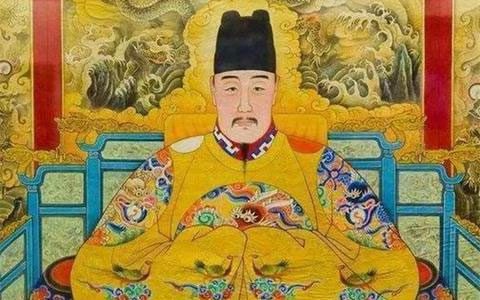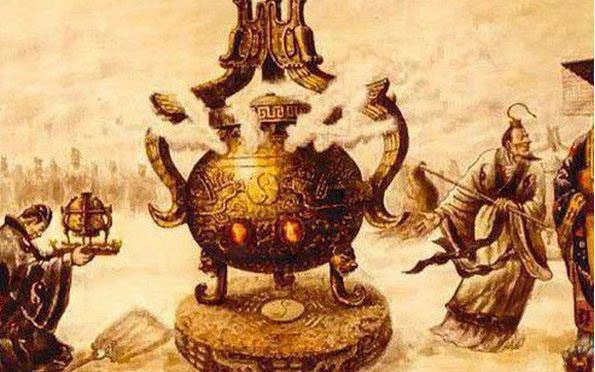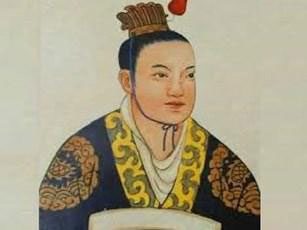Since ancient times, in the imperial harem of various Chinese dynasties, aphrodisiacs became a powerful aid for emperors in matters of intimacy. Notably, the Ming Dynasty is considered one of the periods when aphrodisiac concoctions flourished remarkably.
Among the historical incidents related to aphrodisiacs in China, one must mention the event where the Ming emperor ascended the throne and passed away less than a month later.
Hong Yan Wan
During the reign of Emperor Ming Xizong, Dao Chongwen was merely an obscure warehouse official, but he gained the favor of Emperor Ming Xizong by presenting a concoction known as “Hong Yan Wan”.
When offering this secret potion to the emperor, Dao Chongwen described it as: “Consuming this aphrodisiac will rejuvenate you, improve blood circulation, enhance vitality, and particularly grant you extraordinary strength and endurance in intimate encounters, leading to immortality.”
According to legends, Dao’s secret recipe was incredibly bizarre. The key ingredient for making “Hong Yan Wan” was the first menstrual blood of women (Hong Yan), which was collected in metal containers, mixed with dew and dried plums, and then boiled seven times. After the seventh boiling, additional ingredients such as agarwood, vermilion, and resin were added, followed by refinement over fire, before being condensed into pill form for use.
To create this peculiar “aphrodisiac”, Emperor Ming Xizong organized several rounds of selection for young girls aged 11 to 16 to obtain the “ingredients.”
According to the book “Ming Shilu”, from 1547 to 1564, the Ming emperor selected over 1,000 young girls for the palace. Specifically, in the 26th year of the Jiajing era (1547), 300 girls aged 11-14 were chosen. In the 31st year, another 300 were selected. In September 1555, 160 girls under 10 were recruited, and in November of the same year, an additional 20 young women from Huguang (modern-day Hunan and Hubei provinces) were chosen. In January 1564, 300 palace maids were selected.

Painting of Emperor Ming Xizong.
Many of the young girls, taken at such a young age, cried day and night for their parents, leading families into panic over their daughters’ abduction. Unable to bear the oppression, many decided to revolt. Yang Jin’ang led the uprising, and along with over a dozen palace maids, they attempted to strangle Emperor Xizong. Although the rebellion was unsuccessful, it left the hedonistic emperor shaken.
Escaping that disaster did not mean freedom from fate. Just nine years after using this “aphrodisiac,” Ming Xizong died from poisoning at the age of 59.
Though the debauched Emperor Ming Xizong died, the young girls of puberty age were still not at ease. His successor, Emperor Muzong, also followed in his father’s footsteps by using this bizarre “aphrodisiac”, and he too died from poisoning caused by “Hong Yan Wan” before reaching 36 years old.
Ascending the throne and passing away in less than a month
With two deaths linked to the frequent use of “Hong Yan Wan”, the next successor, Zhu Changluo, continued to follow his father and grandfather’s example. Consequently, Zhu Changluo, the son of Emperor Shenzong and grandson of Muzong, died unexpectedly before he could ascend the throne due to the aphrodisiac. Historical records refer to this as the infamous “Hong Yan Wan Incident” in Chinese political history.

Hong Yan Wan is not beneficial; it can even be harmful to health. (Illustrative image).
As a child, Zhu Changluo did not receive proper education, and upon becoming emperor, he indulged in his desires. Consort Zheng sought to have Emperor designate her as Empress Dowager, preparing jewels and eight beautiful maidens for him. Zhu Changluo, consumed by lust day and night, eventually fell ill.
One night, one of the eight maidens offered by Consort Zheng attended to the emperor. After consuming a pill of Hong Yan Wan, Zhu Changluo suddenly became extraordinarily excited, almost frenzied. Noticing the emperor’s strange behavior, the following morning, Wu Zan had to summon the royal physician. Doctor Thoi Wenxiang believed the emperor was suffering from internal heat and prescribed a series of cooling and laxative medicines. After taking the medicine, the emperor experienced severe diarrhea, going dozens of times in a day.
As Zhu Changluo’s condition worsened, Li Kezhuo from the Honglu Temple claimed to have a miraculous remedy for all ailments, which he wanted to present to the emperor. The medicine Li Kezhuo offered was a red pill believed to be Hong Yan Wan. After taking the medicine, the emperor’s breathing began to stabilize, and everyone sighed in relief. The emperor even praised Li Kezhuo as a loyal minister and commanded generous rewards for him.
That night, while the high officials were waiting outside the emperor’s chamber, suddenly a eunuch rushed in, instructing Li Kezhuo to present another pill. After taking the second pill, the emperor’s breathing seemed to recover. Following the emperor’s order, Fang Yizhe ordered a reward of 50 taels of silver for Li Kezhuo. Just as the order was being issued, suddenly the emperor shouted loudly, clutching his chest, his eyes rolling back, convulsing before passing away shortly after.
Zhu Changluo had been on the throne for just 30 days, becoming one of the emperors with the shortest reign in Chinese history.

Painting of Zhu Changluo.
Regarding the ingredient “Hong Yan,” Li Shizhen, a famous pharmacologist from the late Ming period, explicitly rejected it. In his book “Bencao Gangmu”, he wrote: “Menstrual blood is unclean; quack doctors use deceitful methods to embellish it, considering it a miraculous secret remedy. Many ignorant people believe these baseless claims and introduce this filth into their bodies, harming their yin and yang and causing various diseases… not realizing that this is something noble people should avoid.”
Subsequent studies have also confirmed that neither “Hong Yan” nor women’s menstrual blood contains substances that can rejuvenate or have special healing properties. Therefore, modern traditional Chinese medicine texts no longer mention “Hong Yan.”


















































